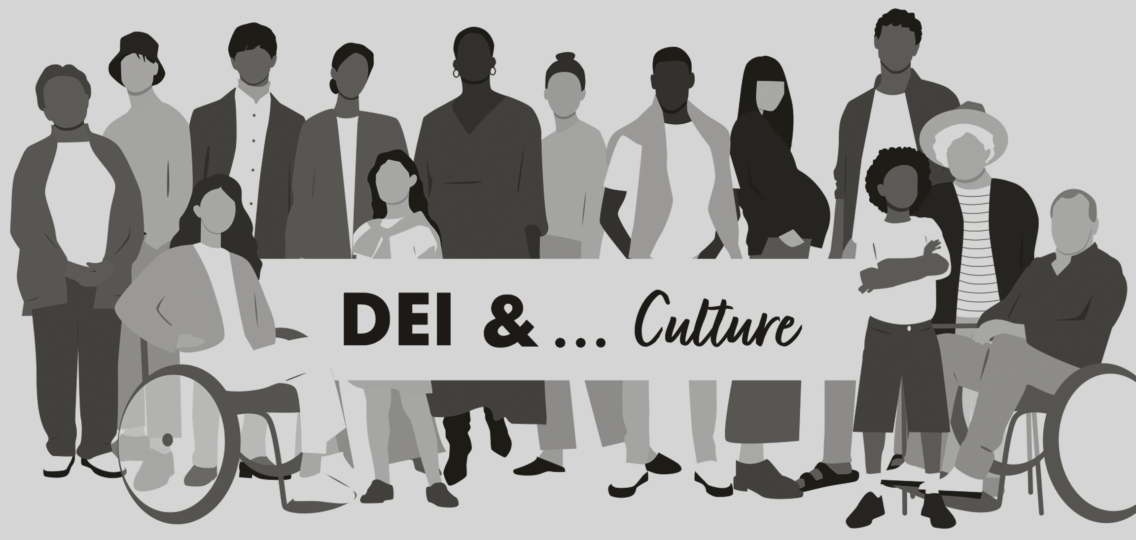So far in our DEI focus series, we’ve looked at the links between diversity, equity and inclusion and your wellbeing and rewards strategies. This month, we shine a spotlight on DEI and workplace culture.
There’s a wealth of information out there about how to build a culture of DEI in the workplace, with as many different schemes and possibilities as there are organisations. As each company is different, how to embed DEI into your culture will depend on your circumstances. But there are lots of good ideas out there that you can benefit from – we’ve collated some real-life examples, which you can choose to implement for your own people.
Recruitment
Improving diversity within the workplace starts with the recruitment process, and many organisations are investing in “blind hiring”. When job applications are sent to hiring managers, the applicant’s background is hidden from view, so their invitation to an interview is based purely on merit, without conscious or unconscious bias coming into play. It’s a simple move that can have far-reaching consequences, improving diversity across the board and creating a workforce with a wide range of skills, backgrounds and ideas.
Celebrating cultural identities
Society still has a long way to go before people feel they can be their authentic selves. Among your colleagues, you might find some who feel they need to hide their identity, in an attempt to fit what they perceive to be cultural norms. They may actively change the way they dress, or even their names, to “fit” what is perceived to be the right image for clients.
You can create a supportive culture that proactively encourages ethnic diversity in the workplace, so everyone is valued for who they are and the experiences they bring. One company, who came top of the Sunday Times Best Companies list, runs workshops which focus on elevating and building confidence. This is especially for colleagues from diverse backgrounds, so they feel comfortable to embrace their identities at work.
Whole-person principle
Inclusive companies recognise that we all have lives outside of the 9-5 and welcome and celebrate these. When the pandemic hit, many organisations helped their employees cope with the inevitable cabin fever. They stepped up their offering to employees, providing a range of options for their people. Some provided flexibility around home schooling, some hosted virtual quizzes and cooking classes on Zoom, some organised panel sessions with experts to help cope with the lockdown effects on mental health.
But what about outside of pandemics? One organisation hosts a “Bring Your Kid to Work Day” every April, where employees get to do just that. There are crafting activities, fun challenges and the kids even shadow parents at meetings (we’d love to think they’re given the opportunity to share their thoughts on the workplaces of tomorrow).
Engaging with your colleagues’ needs, both inside and outside work, shows them that you value them as a whole person – no matter what their background or personal circumstances are. With an increasing percentage of the national workforce being part of the “sandwich generation”, caring for both parents and young offspring, a culture which acknowledges their difficulties and concerns and supports them as they navigate the challenges of life is ever more important.
Mentoring
Mentoring is one of the most tried and tested ways to develop and grow individuals, helping them reach their greatest potential. Carefully pair your employees with a member of your executive or leadership team who can coach and develop them. They can then meet regularly to discuss the employee’s successes and difficulties, and advise on next steps and overcoming obstacles.
There are benefits for both mentors and mentees. Many organisations who start mentoring schemes find that they’re inundated with willing volunteers from senior teams – showing just how keen those at the top are to pass on their skills and knowledge and create a more level playing field all round.
You can also use mentoring to address specific DEI concerns in your workplace. For example, you might consider focusing your mentee intake on a specific, underrepresented group like veterans, women or LBGTQ+ employees to promote diversity and belonging.
Building a truly inclusive workplace culture takes time, effort, and as we think these great examples show, a little bit of boldness and imagination. With times changing as rapidly as they are, we’re helping more and more of our clients communicate their DEI initiatives with confidence.
Could your company culture embrace diversity, equality and inclusion more? Come and chat to us, we’d love to help. Don’t forget to tune in next month for our DEI focus on storytelling!



